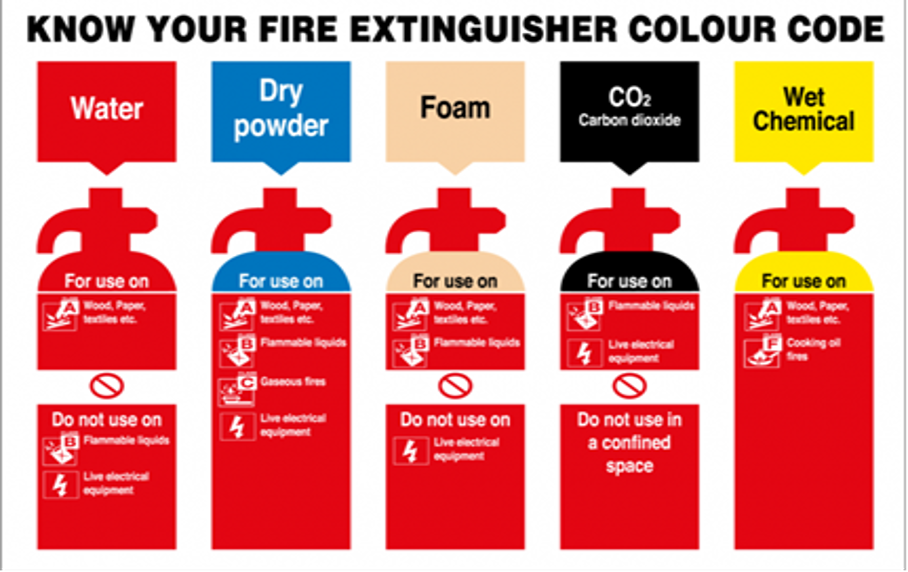Class A extinguishers are for ordinary combustible materials such as paper, wood, cardboard, and most plastics. The numerical rating on these types of extinguishers indicates the amount of water it holds and the amount of fire they can extinguish.
Class B fires involve flammable or combustible liquids such as fuel, paraffin, grease and oil. The numerical rating for class B extinguishers indicates the approximate number of square feet of fire it can extinguish.
Class C fires involve electrical equipment, such as appliances, wiring, circuit breakers and outlets. Never use water to extinguish class C fires - the risk of electrical shock is far too great! Class C extinguishers do not have a numerical rating. The C classification means the extinguishing agent is non-conductive.
Class D fire extinguishers are commonly found in a chemical laboratories. They are for fires that involve combustible metals, such as magnesium, titanium, potassium and sodium. These types of extinguishers also have no numerical rating, nor are they given a multi-purpose rating - they are designed for class D fires only.
Click here to view a video that explains how to distinguish between the different classes of fire.
Most Common Types of Fire Extinguishers
Water extinguishers or APW (Air-pressurised water) extinguishers air-pressurised water) are suitable for class A fires only. Never use a water extinguisher on grease fires, electrical fires or class D fires - the flames will spread and make the fire bigger!
Dry chemical extinguishers come in a variety of types and are suitable for a combination of class A, B and C fires. These are filled with foam or powder and pressurised with nitrogen. This is the regular type of dry chemical extinguisher. It is filled with sodium bicarbonate or potassium bicarbonate.
It is vital to know what type of extinguisher you are using. Using the wrong type of extinguisher for the wrong type of fire can be life-threatening.
Look for the fire class symbols. Every manufacturer uses symbols that tell you at a glance which classes of fire the extinguisher is rated for. They appear on the label as either the class letter inside an icon.
